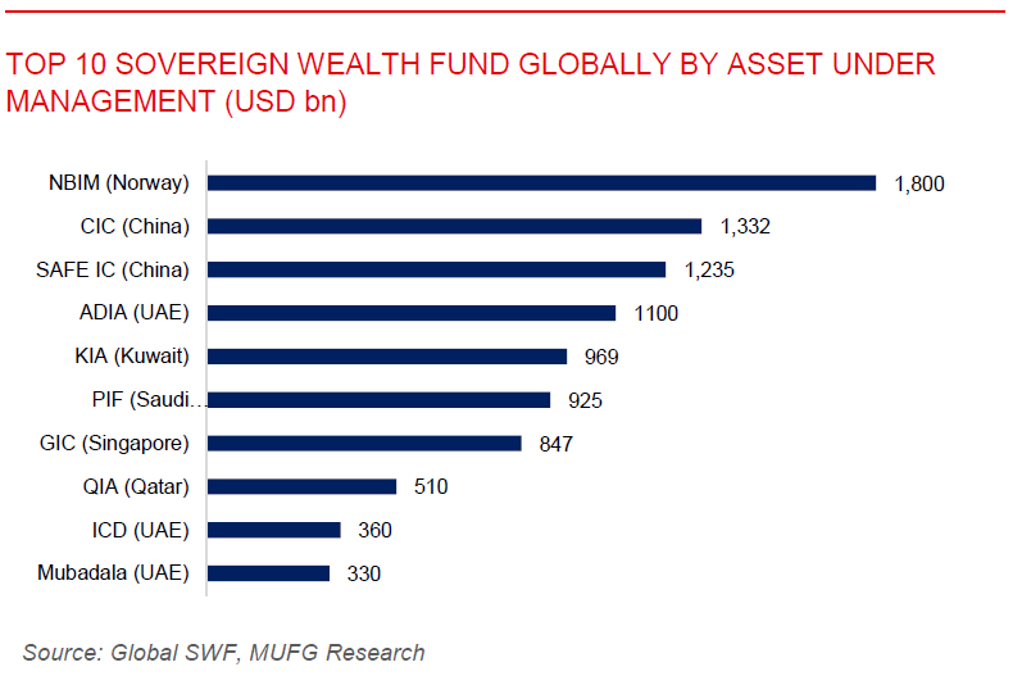To read the full report, please download the PDF above.
Middle East Daily
SOOJIN KIM
Research Analyst
DIFC Branch – Dubai
T: +44(4)387 5031
E: soojin.kim@ae.mufg.jp
MUFG Bank, Ltd. and MUFG Securities plc
A member of MUFG, a global financial group
Middle East Daily
COMMODITIES / ENERGY
Oil slips toward one-month low ahead of expected OPEC+ output hike. Oil prices fell for a second straight day, with Brent trading below USD67/b and WTI near USD65/b, as attention turned to this weekend’s OPEC+ meeting, where the group is expected to approve another 411,000b/d supply increase. This would mark the fourth consecutive monthly hike, driven largely by Saudi Arabia’s push to regain market share amid softening prices. After a volatile second quarter, marked by geopolitical shocks, tariff fears, and a short-lived rally, oil has lost nearly 10%, and momentum remains weak. With demand outlook uncertain, especially in China and other major economies, and US tariff hikes set to resume on 9 July, market focus has returned to supply-demand fundamentals. Talks with key trade partners, including Japan, remain unresolved, adding further pressure. Some market watchers warn that without a demand rebound, oil could test USD60/b in the months ahead, especially if consumption fails to pick up.
Gold rises on Fed rate cut hopes and weaker dollar, platinum extends rally. Gold climbed for a second day, trading near USD3,311/oz, as expectations grew that the Fed may resume rate cuts later this year, boosting appeal for non-yielding assets. Traders are now pricing in at least two cuts in 2025, with an upcoming US jobs report seen as a key trigger. Ongoing US trade uncertainty and the weakening dollar, down nearly 11% YTD, its worst first-half performance since 1973, have also supported gold, which remains up about 25% this year. Meanwhile, platinum surged 0.6% after posting a record monthly gain in June, driven by tight supply and strong demand from China’s jewellery sector. Silver and palladium also advanced.
MIDDLE EAST - CREDIT TRADING
End of day comment – 30 June 2025. Busy month and quarter end flows. As ETFs had seemingly bigger inflows the ratio from buyers to sellers got skewed to 2:1. However there was some differentiation between credits. In the IG space QATAR continues to underperform on Index exit outflows. EM dedicated RM sold QATAR sovereign and QPETRO across the curve. Whilst this selling flow got well absorbed the underperformance of QATAR vs ADGB continued, Qatar 50s closing -0.125/+1bp vs ADGB 54s +0.125pt/-2bp. In higher beta space OMAN outperformed with afternoon inflows evenly split between bonds on the curve, 48s (+0.375pt/-4bp) outperformed a touch. MOROC was quieter but has good buying interest in old belly bonds like 30s EUR (+0.25pt/-6bp) or MOROC 32s USD (+0.25pt/-4bp). Fins and corps comparably quiet against sovereign and quasis. However with yields lower in the past 2/3 trading sessions we started to see more sellers of short end bonds across fins name, that flow got very well absorbed by dealers. Busy and strong quarter end in a US shortened week. Focus will shift to the Big beautiful bill and labour data and subsequent UST reaction.
MIDDLE EAST - MACRO / MARKETS
Saudi wealth fund boosts investment income despite profit drop amid economic pressures. Saudi Arabia’s Public Investment Fund (PIF) earned USD34.5bn from investment activities in 2024, up 38% y/y, driven by surging dividends and asset sales. However, net profit fell over 50% to USD7bn, as higher interest rates, inflation, and project impairments weighed on the performance. The results reflect growing pressure on the USD925bn fund, which is central to delivering the kingdom’s Vision 2030 agenda amid rising fiscal deficits and lower oil revenue. In response, the PIF is cutting budgets for some domestic projects, increasing borrowing, now at USD152bn, selling equity stakes, and exploring new fundraising options. While it plans to reduce the global share of its portfolio to 18%, the absolute value of overseas investment will rise, with capital deployment expected to reach up to USD70bn annually. The fund also raised its 2030 asset target to USD2.67 trillion, supported by stronger revenue from portfolio firms like Saudi National Bank and continued Aramco dividend inflows, though those are expected to shrink after payout cuts.
IMF: KSA maintains economic resilience amid oil cuts and reform momentum. IMF staff recently concluded the Article IV mission to Saudi Arabia, noting the economy’s continued resilience despite oil production cuts. In 2024, non-oil GDP grew by 4.2%, driven by strong private consumption and investment, while oil GDP fell 4.4%. Inflation stayed near 2%, unemployment hit record lows, and non-oil revenues improved the fiscal balance slightly. In 2025, non-oil growth is projected at 3.4%, with overall GDP at 3.5% as oil production recovers. Structural reforms and a stable monetary framework continue to support economic diversification and stability.

